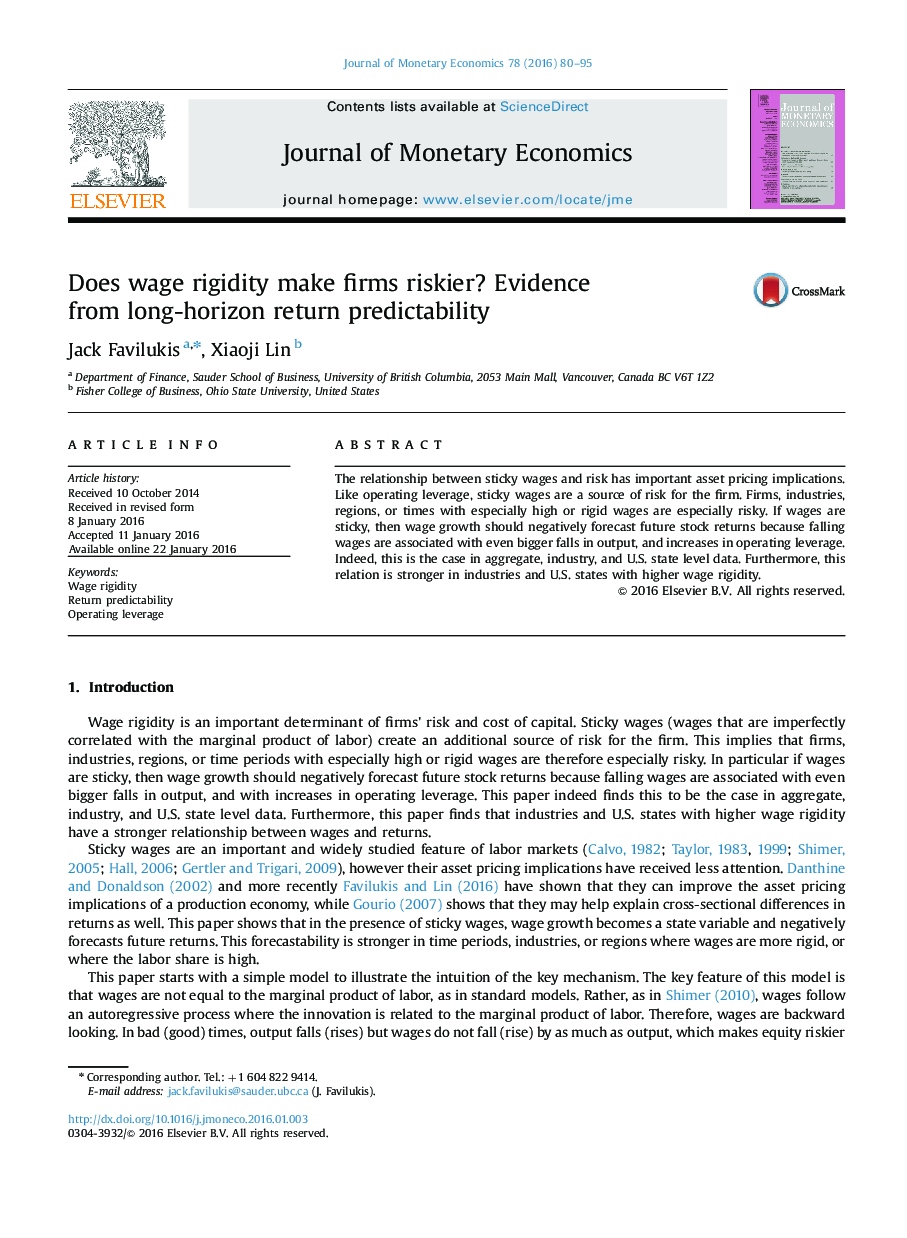| Article ID | Journal | Published Year | Pages | File Type |
|---|---|---|---|---|
| 967579 | Journal of Monetary Economics | 2016 | 16 Pages |
•Study the implications of sticky wages for firms׳ risk in the U.S. data.•Model implies that wage growth should negatively forecast future returns.•Wage growth negatively forecasts returns at the aggregate, industry and state level.•The forecastability is stronger in industries, or regions where wages are more rigid.•Results show that wage rigidity is an important determinant of firms׳ cost of capital.
The relationship between sticky wages and risk has important asset pricing implications. Like operating leverage, sticky wages are a source of risk for the firm. Firms, industries, regions, or times with especially high or rigid wages are especially risky. If wages are sticky, then wage growth should negatively forecast future stock returns because falling wages are associated with even bigger falls in output, and increases in operating leverage. Indeed, this is the case in aggregate, industry, and U.S. state level data. Furthermore, this relation is stronger in industries and U.S. states with higher wage rigidity.
